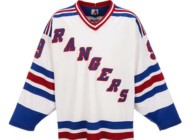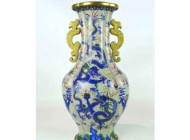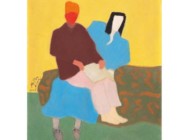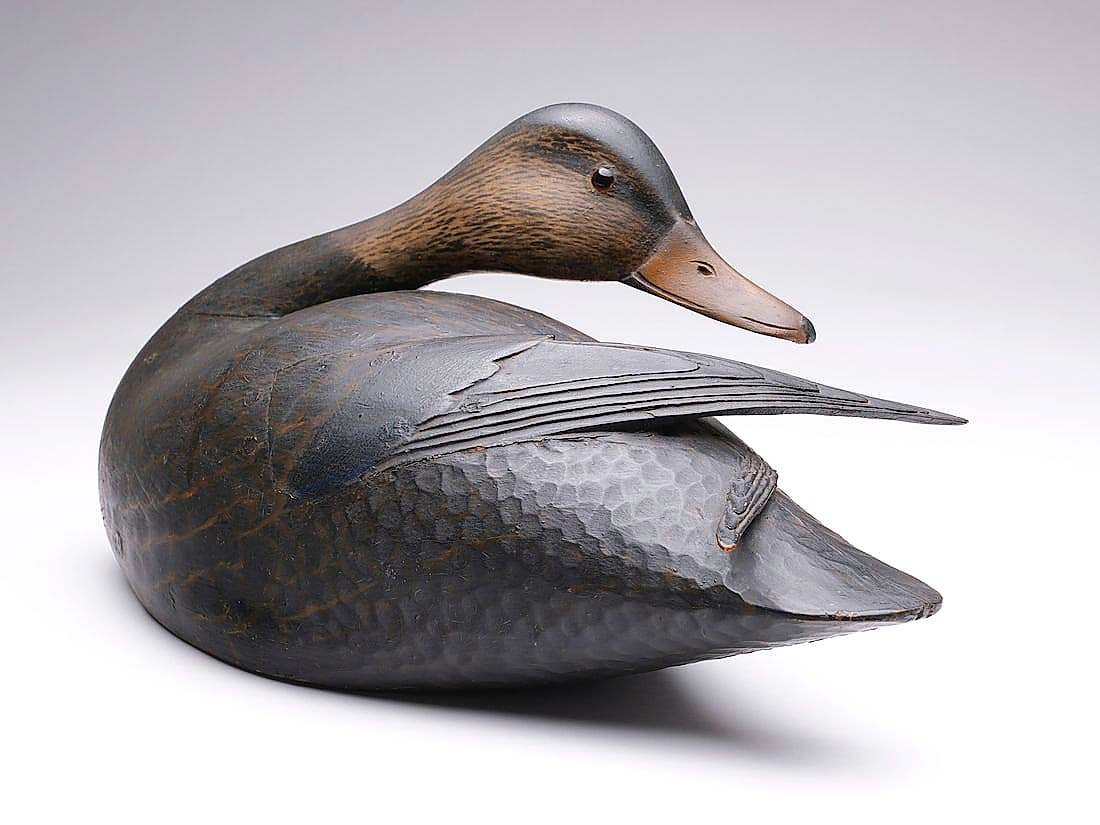
There were several Elmer Crowell decoys and miniatures in the sale, but this circa 1905 preening black duck was special, featuring chip- and relief-carving on its crossed wings. The star of the sale and from Alan Haid’s collection, it brought $480,000.
Review by Rick Russack
LOMBARD, ILL. — What does Guyette & Deeter’s April 25 and 26 auction say about the state of the decoy market? You can answer that question as well as we can: 15 decoys each sold for more than $100,000. Bidding activity was intense on these decoys for which there were eight or nine different buyers. About 100 more brought more than $10,000 each. The total for the two-day sale was $6.4 million, the highest auction total for any decoy sale since the year 2000, when the legendary collection of Dr James McCleery brought $11 million. The highest-priced decoy in Guyette & Deeter’s sale sold for $480,000, followed in second place at $348,000 and rounding out at $220,000. The new owner of the $480,000 decoy was new to Guyette & Deeter.
The auction was based around three major collections — those of Alan and Elaine Haid, Dave Fannon and Jim and Patti Aiken. The first 60 lots were from the Haid collection, which by itself earned $3.8 million, and included the 15 decoys that brought $100,000 or more. Guyette & Deeter’s 358-page catalog for this auction devoted 122 pages to describing and illustrating these 60 lots. The Haid family spent more than 55 years pursuing and acquiring; they always upgraded. Many of these decoys have never been offered at auction — they were purchased privately while most decoys are usually traded or sold at decoy shows — and were fresh to the market. For nearly each carver in the collection, extensive biographical notes were included in the catalog, and can now be found online at Guyette & Deeter’s website.
The Aiken collection concentrated on decoys produced by Michigan-area carvers, especially Ben Schmidt and Charles Walker. Leading the collection was a rigmate pair of wood ducks by Schmidt, which sold for $14,400.
Dave Fannon’s collection of fish decoys, plaques and other carvings by Oscar Peterson included some of Peterson’s finest works; many have never been offered at auction. Leading these carvings was a 30-inch-long relief-carved plaque of a jaguar, the only one known to exist; it earned $60,000.
There was plenty more in the sale from other sellers: folk art carvings by Frank Finney, weathervanes, a Native American cigar store figure from the Mark Goodman collection, duck and goose calls, sporting art and dozens of sought-after vintage decoys as well as contemporary carvings by today’s masters of the art.
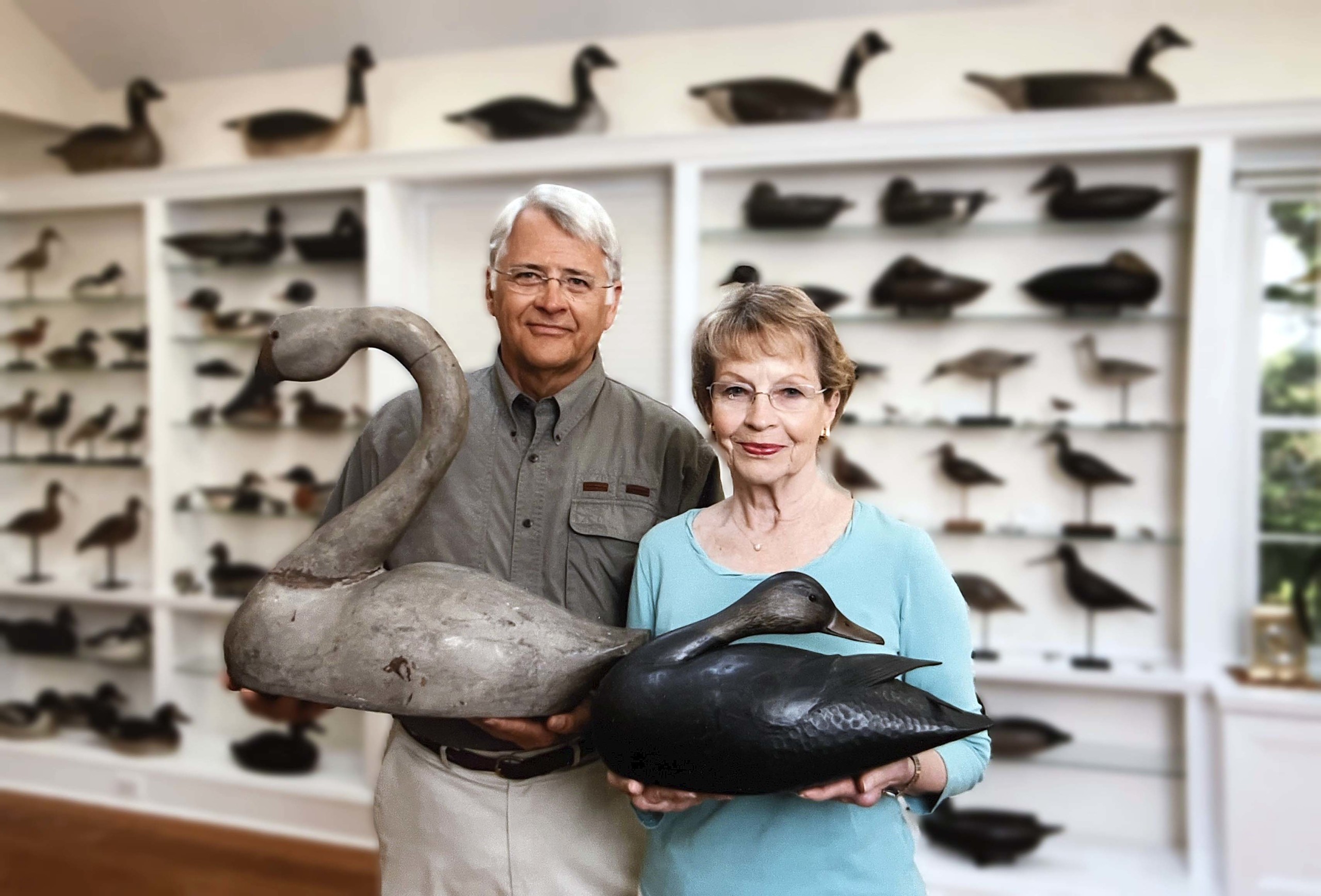
Alan and Elaine Haid collected for more than five decades. Part II of their collection will be sold in July.
The Haid Collection
Alan Haid was a collector, dealer, author, mentor and most importantly, a scholar. He and his wife assembled one of the finest decoy collections in the country. Many decoys were included in this auction; a second selection from the collection will be sold at Guyette & Deeter’s July 26-27 sale. Haid’s interest in decoys goes back over five decades and was kindled by a gift of a pair of miniature mallards from his wife, Elaine. Haid was well-known in the decoy world, attending decoy shows all over the country and entering his birds in numerous exhibitions and his decoys were illustrated in many books. Throughout his years of collecting, he was continually upgrading his collection, often selling four or five decoys to acquire a single “better” example, and in one case, selling more than 30 decoys to be able to purchase an outstanding Elmer Crowell bird included in this sale.
We discussed Alan Haid and his collection with Russ and Karen Goldberger, who were longtime friends and business partners of Haid; he and Russ co-authored two books on Mason Factory decoys. Russ Goldberger said, “Alan and I met when we both lived in metro Cincinnati back about 40 years ago. He had advertised for decoys and I had a Mason that I thought was special but he showed me — gently — that it wasn’t. He offered to teach me more; he was the consummate patient teacher and scholar. As my knowledge grew, we became business partners: I brought professional marketing skills, he offered business acumen. We had the best kind of partnership — one that had no written agreement — just trust and honesty. This lasted over 40 years.” Karen Goldberger added, “[the Haids] were wonderful people and I always thought of them as family.”
In addition to the two Mason books, Haid also wrote Decoys of The Mississippi Flyway (Schiffer Publishing, Exton, Penn., 1981) and contributed to the Ward Museum’s 2010 exhibition catalog, The Decoys of Long Island (Smithtown, N.Y.)
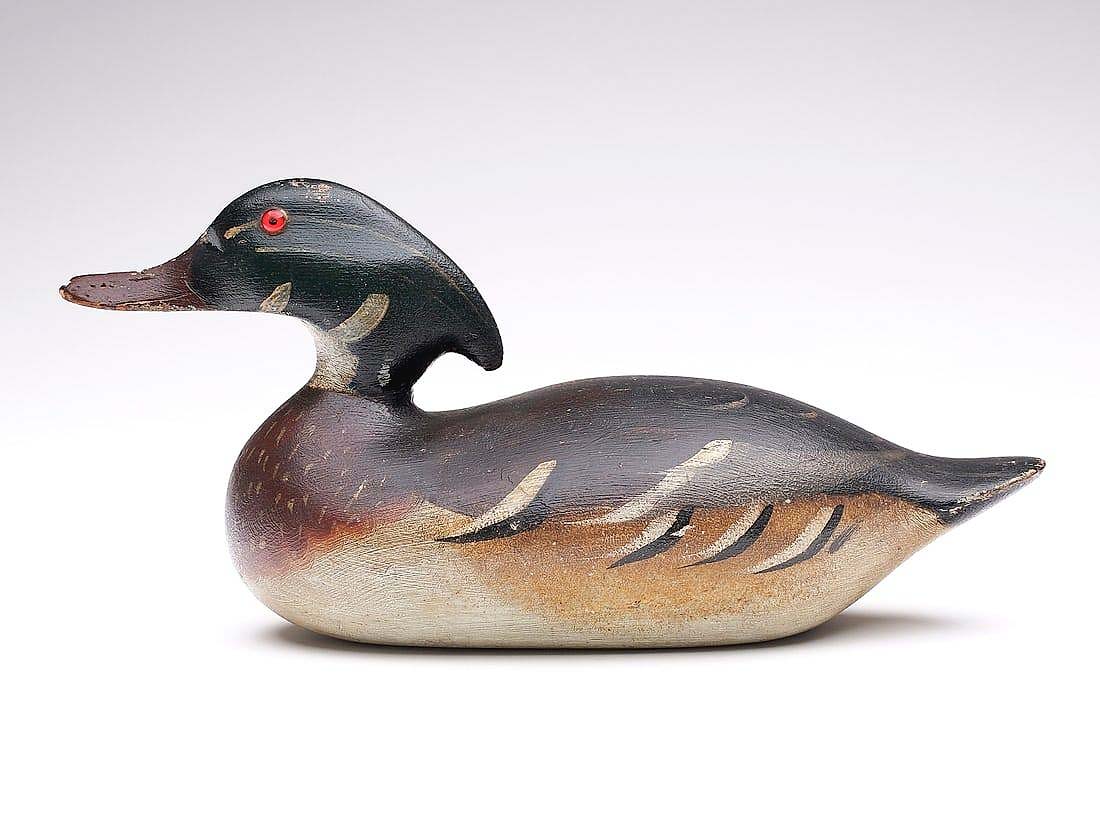
Alan Haid and Russ Goldberger wrote the basic reference work on Mason Factory decoys, which has been so popular there have been two editions. This Mason premier grade wood duck drake realized $137,500.
All 15 decoys in the auction that brought $100,000 or more were from the Haid’s collection, underscoring its quality and depth. They represented the work of carvers from different parts of the country. The decoy that sold for $480,000 was made by Elmer Crowell, East Harwich, Mass. It was a preening black duck, circa 1905, with exceptional detailing and carved with its head turned back, as if to preen the two crossed wing tips that had relief and chip carving. This was one of Crowell’s early carvings; as his business increased and developed, he found that he did not have the time to repeat all the details he featured on this decoy.
The second-highest price from the Haid collection, $348,000, was earned by a decoy made by Harry Shourds, Tuckerton, N.J. It was a swimming Canada goose; one of only two known in that form. Earning $222,000 was a feeding black-bellied plover with relief wing carving and carved eyes made by Obediah Verity, Seaford, Long Island, N.Y. Three other top earners were also Long Island shorebirds. Shorebirds carved on Long Island are a specialty of their own and an area that has not yet been exhaustively researched. The catalog had an extensive discussion of these birds and included a map showing where each of the carvers lived and worked.
Two factory-made decoys, both from Detroit, Mich., were also among the collection’s top-earners. One was an outstanding wood duck drake made by the Mason Decoy Factory. It was their Premier grade, with relief bill carving and a “snakey” head style; it sold for $198,000. The other was a swan made by the Dodge Decoy Factory that brought $168,000. Decoys by Lem and Steve Ward of the Chesapeake Bay area, and one from the Illinois River flyway by Robert Elliston rounded out the six-figure decoys.
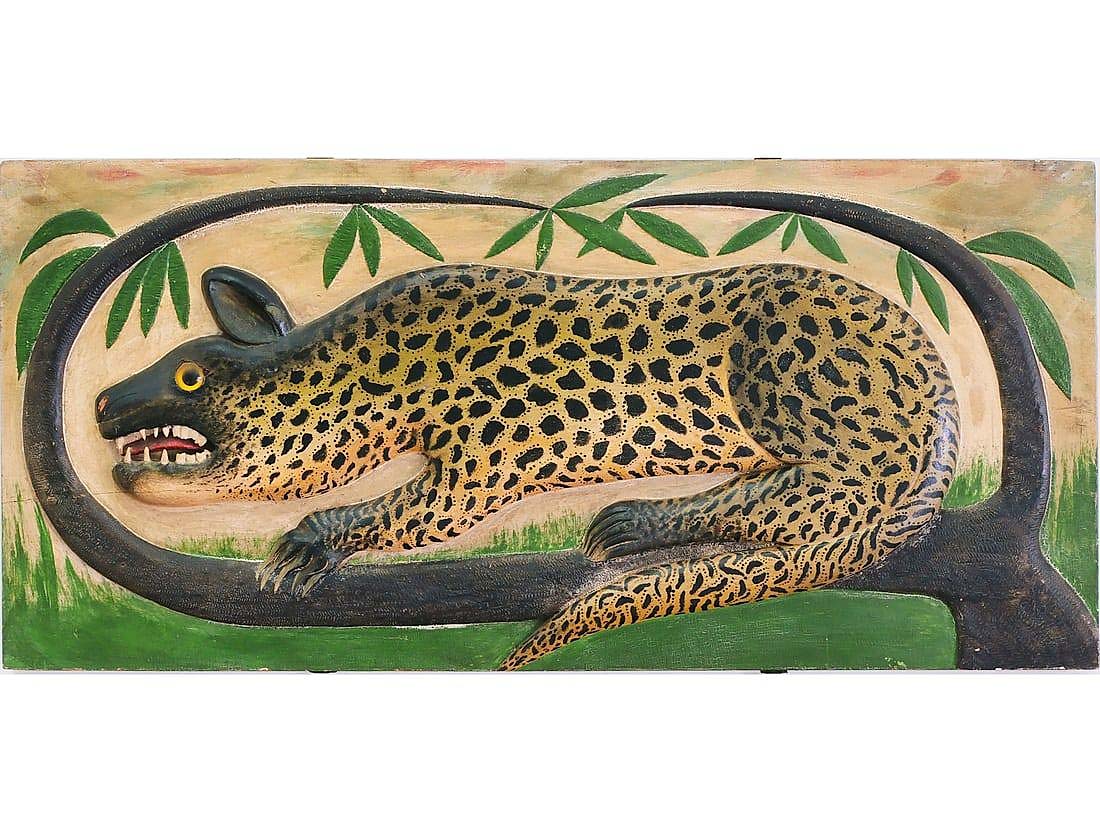
A 30-inch-long relief carved plaque of a jaguar perched in a tree, circa 1930, by Oscar Peterson of Cadillac, Va., sold for $60,000.
The Dave Fannon Collection
Dave Fannon spent more than 30 years of his life collecting Oscar Peterson carvings, seeking the very best plaques, vases and fish decoys that he could find. He succeeded in that quest and the sale included many of Peterson’s finest works, some of which had never been previously offered at auction. According to the catalog, with research credited to Gary Miller, Peterson is known to have often traded his works for whiskey at bars in his hometown Cadillac, Mich., and for other necessities as well. The agreed-upon economics were such that one fish decoy equaled one shot of whiskey. The Busy Bee Café was one of Peterson’s favorites and the closest to his house; while some people he traded decoys with sold them, the owner of the café kept Peterson’s large plaques and vases for display in the bar. Fannon acquired some of them from the estate of the café owner.
Twelve of Peterson’s carvings each sold for more than $10,000, with the top honor going to a relief-carved jaguar perched in a tree, made circa 1930. The only known example, it measured 30 inches long, had carved teeth, a curled tail and extended tongue and sold for $60,000. An 11-inch-tall vase, the largest of his known vases, was carved with four different species of fish and sold for $48,000. Two pieces brought $33,000: one was a 30-inch-long carved plaque of a northern pike, the other was a 36-inch-long plaque of a spawning brook trout.
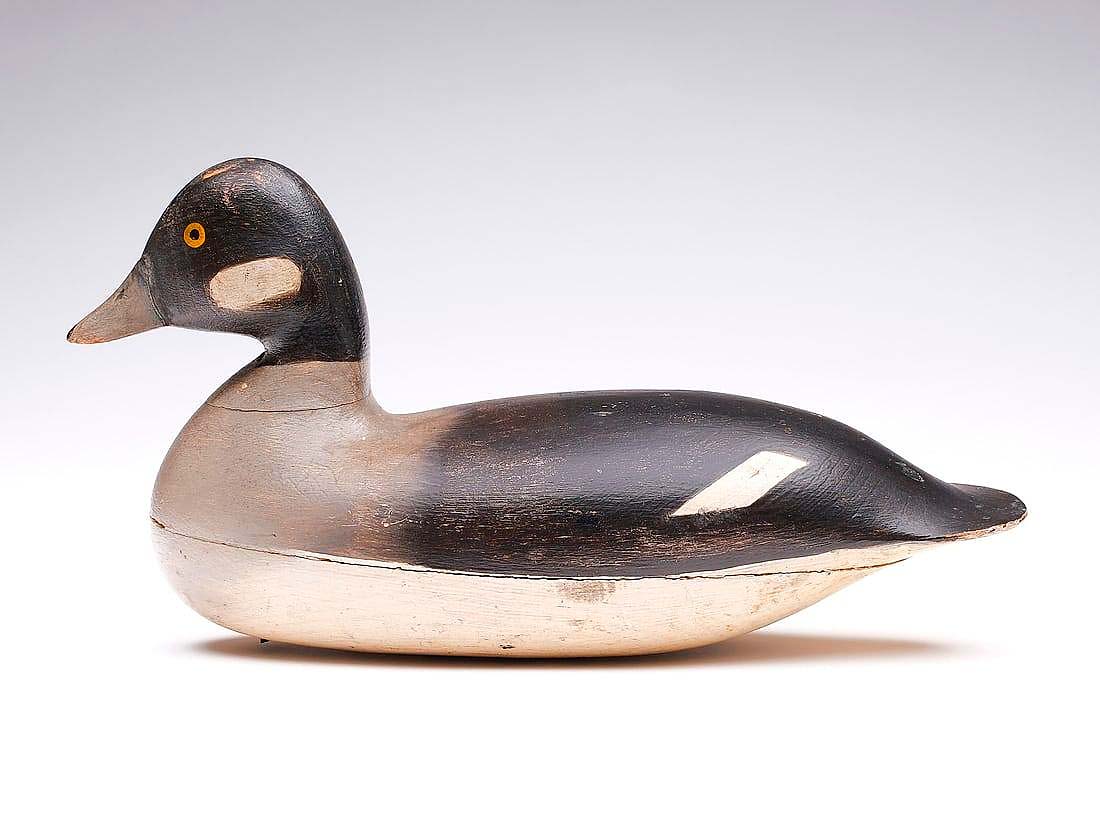
A rare bufflehead hen by Harry Shourds sold for $30,000. It was hollow carved and had been in the William J. Mackey collection.
The Jim and Patti Aiken Collection
The Aikin Collection was built over a 50-year period. Jim and Patti focused on decoys from their home state of Michigan, with a special emphasis on the best Ben Schmidt decoys they could find; there were 11 of these in the sale. A circa 1955 rigmate pair of wood ducks with extended crests and extensive feather carving reached $14,400. A rigmate pair of pintails with relief wing tip carving and feather stamping brought $9,000.
The Aiken collection included several decoys by other Michigan makers, including a merganser hen with extended crest carving and comb feather paint detail. It was one of only two known examples made by the Christie Brothers and sold for $7,200.
Guyette & Deeter are making extensive use of social media as they develop new collectors and encourage in a variety of ways those just getting started. For this sale, they conducted a well-attended open house at their offices about two weeks before the sale where all the decoys were out and handling was allowed. Refreshments were served and all were invited. The preview party the evening before the sale was held in conjunction with the North American Vintage Decoy and Sporting Collectibles Show, which is the largest decoy and sporting collectibles show in North America and which was attended by hundreds. Staff members were present to answer questions and collectors discussed birds with one another. Guyette & Deeter also hold weekly online auctions to encourage new collectors to get started. For those who cannot attend previews, private viewings are arranged in various parts of the country, as well as in the homes of collectors.
Jon Deeter commented, “This was our best sale ever and we’re delighted. It was the highest gross for a decoy auction since the McCleery sale over 20 years ago. We’re doing everything we can think of to get new collectors involved with decoys. Our weekly online auctions are designed for newer collectors, and we think our catalogs — which are expensive to produce — are informative for collectors at all levels. We try to schedule our sales around other activities in the decoy and sporting collecting worlds. And it works — we’re seeing new bidders with every sale.”
Prices quoted include the buyer’s premium as reported by the auction house. For additional information, 410-745-0485 or www.guyetteanddeeter.com.

























